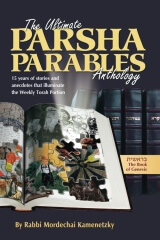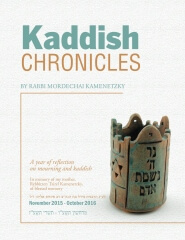
Some people just never learn. For almost a year Pharaoh was literally plagued by every conceivable misfortune, yet he refused to let the Jewish people leave his land. Of course, he pleaded with Moshe during every plague to stop the great inconvenience, pain, and disaster that were befalling his country. He would even promise to let the Jews go, yet he never admitted guilt. He would beseech Moshe to stop the various plagues. “Pray for me and remove the frogs! I will let you serve your G-d in the desert (Exodus 8:4).” Sometimes he would offer unrestricted freedom, only to renege when the plagues ceased. Never, except on one occasion, did Pharaoh admit that G-d was correct and he was corrupt.
That exception was the plague of hail. In fact, the plague of hail was so powerful that even Hashem Himself categorized it in a unique way. Moshe quoted Hashem to Pharaoh: “This time I shall send all my plagues against your heart, upon your servants, and your people so that you shall know that there is none like Me in the world” (Exodus 9:14). Why did Hashem consider the hail a more powerful act than His turning water into blood, or delivering pestilence, or wild animals or frogs? True, the hail did miraculously contain a fire ensconced in the ice, but all the plagues had miraculous attributes to them. Turning the Nile into blood is not an everyday occurrence either! What characteristic did the hail have to label it “all my plagues?”
Even more troubling is Pharaoh’s response. After the plague strikes Egypt he calls Moshe and Ahron and he tells them “this time I have sinned, Hashem is righteous and I and my people are the wicked ones” (Exodus 9:27) What caused Pharaoh to utter those submissive words at this particular time? Didn’t he already see blood, frogs, pestilence, boils, wild animals, and a host of different miraculous misfortunes that befell his people? What was so special about the fire and ice that fell from the heavens that charred even this man’s cruel temper?
Radio commentator, Paul Harvey, relates the following story: William and his Aunt Caroline were constantly feuding. Actually, William was jealous of his aunt’s popularity and social status in the New York of the late 1890’s. Compared to her, he was considered a social outcast, and was never invited to any of her lavish parties. That would have been bad enough. Having to live next door to her was too much for William to bear. The sight of elegant carriages arriving and departing made him seethe. Yet he could do nothing. At least he did nothing until the family fortune was distributed and he received 100 million dollars. Then he knew what to do. He decided to rip down his mansion and build a monstrosity. It had 530 rooms, 350 baths, and a whopping 970 employees. It would be the grandest, most elegant guest house of it’s kind. More carriages would pull up to his home in a day then to his aunt’s mansion in a month! Her home would pale in comparison, and the tumult of it all would force her to move.
William was right. Aunt Caroline moved way north of the shadow of her nephew’s hotel. And then she ripped down her old home. With the mere 50 million that she received, she too, decided to build a hotel on the site of her old mansion! It would be even more elegant, with nicer rooms and better service than her nephew’s. Two adjacent, competing hotels would have been built right next to each other if not for the wisdom of William’s own hotel manager. He got the two feuding relatives together and explained that hostility is not the way to success.
“If you two could just work together and adjoin the two hotels as one, it would become the most outstanding and influential accommodation on earth,” he explained. They listened and followed his instructions. He even advised them to make sure that every opening between the structures could be sealed again in case of a renewed falling-out. But in the end, William Waldorf and his aunt, Caroline Astor decided to bury the hatchet and replace it with a hyphen. And the world’s most luxurious accommodation was built — The Waldorf-Astoria Hotel.
There are many opposing forces in the world. However, when they work in tandem, they are the most powerful force possible. During this plague, fire and ice, two opposing forces in the world of nature disregarded their differences all in the service of the Supreme Commander. When Hashem announced that He will send all of His plagues, he was referring to conflicting forces that work harmoniously. After that, even Pharaoh was sensible enough, albeit for a short moment, to see his frailty and delusions. When even the worst of men see fire and ice dance together on one mission, there is nothing he can do but watch in amazement and admit, “Hashem is the righteous one and I and my people are the wicked ones.” When opposing opinions gather for one objective – to do the will of Hashem – they are as unstoppable as the hail that brought Pharaoh to his knees.
Copyright © 1998 by Rabbi M. Kamenetzky and Project Genesis, Inc.
If you enjoy the weekly Drasha, now you can receive the best of Drasha in book form!
Purchase Parsha Parables – from the Project Genesis bookstore – Genesis Judaica – at a very special price!
The author is the Dean of the Yeshiva of South Shore.
Drasha is the e-mail edition of FaxHomily, a weekly torah facsimile on the weekly portion
which is sponsored by The Henry and Myrtle Hirsch Foundation
Books by Rabbi Mordechai Kamenetzky:
 |
 |


